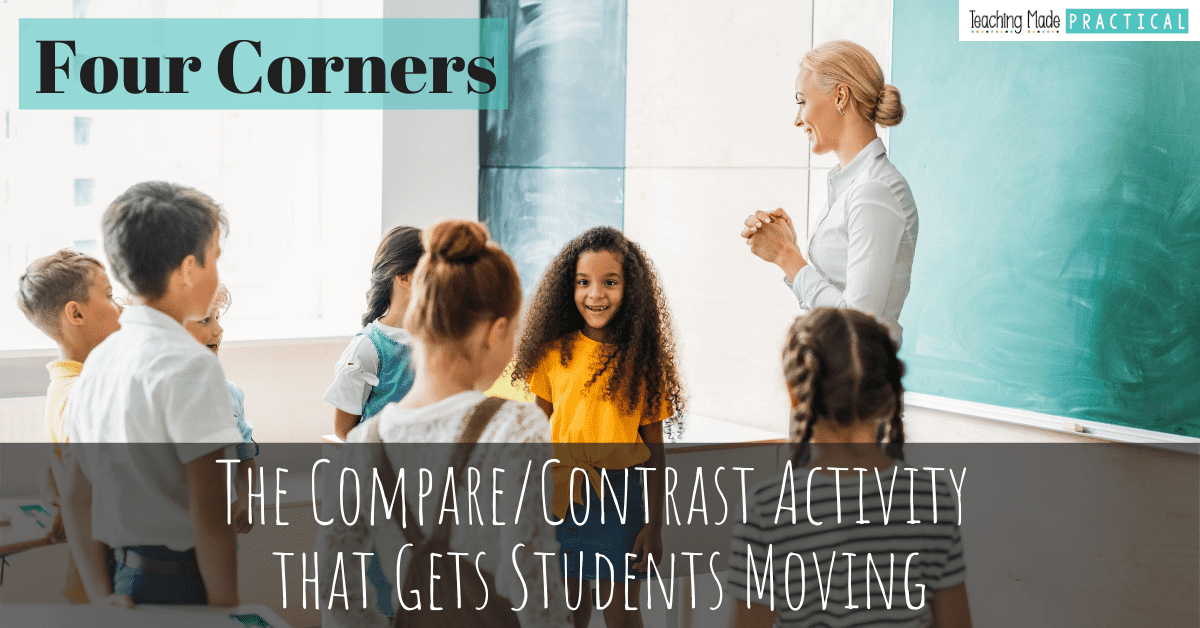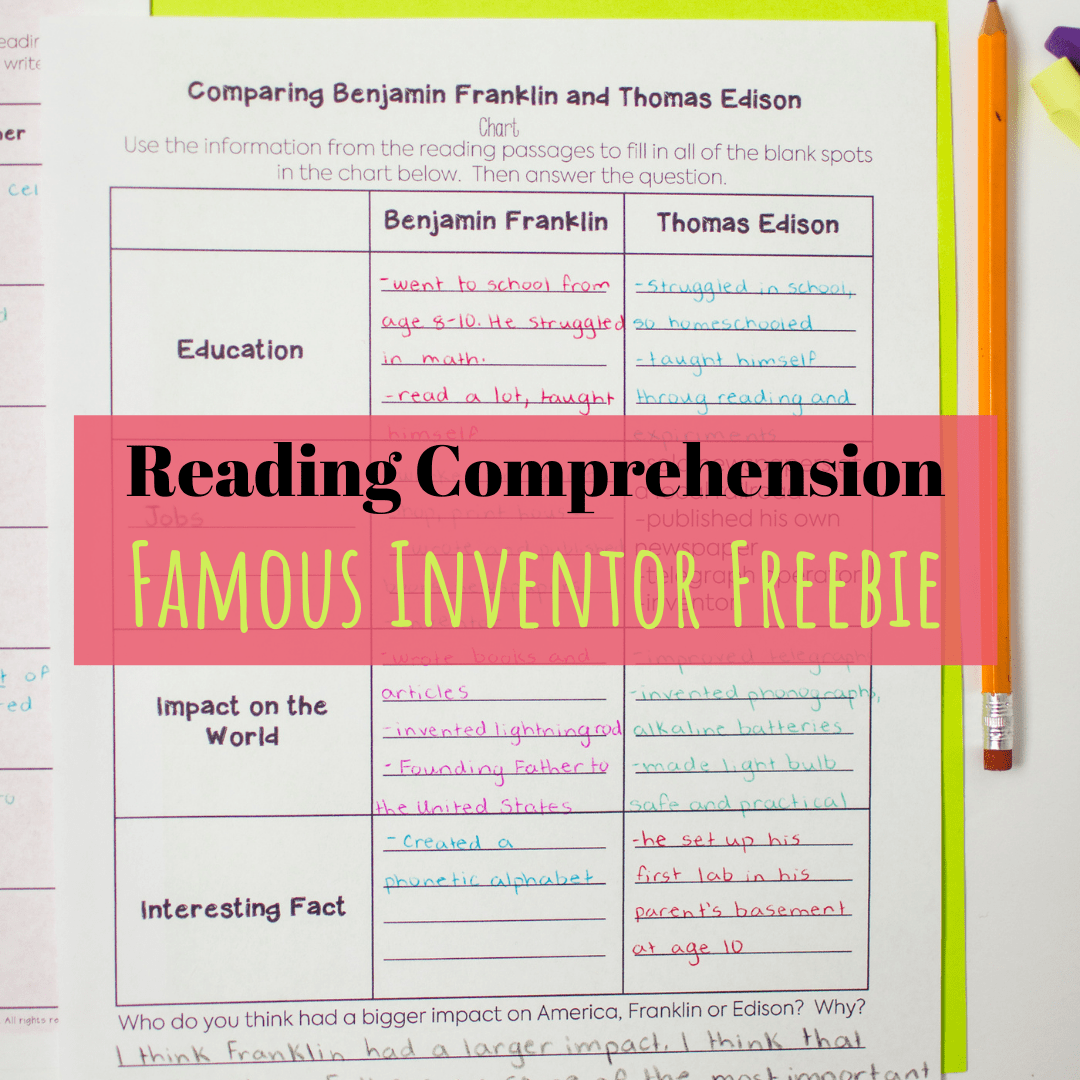
Four Corners is a popular strategy where different statements are posted at each of the 4 corners of the classroom. 3rd, 4th, and 5th grade students are asked to go to the statement that they most agree with and then discuss it with the other students there.
Although this game is often used for ice breakers or debate, it can be easily adapted in several ways to help students compare and contrast. As an added bonus, it makes for an engaging lesson and it gets students up and moving without the need for a brain break.
Below, find 3 different ways you can adapt Four Corners for your compare and contrast lessons, with an example provided. Some adaptations require a little more prep, while others require minimal prep.
For an even more active and exciting version of this activity, check how to compare and contrast with a classroom snowball fight!
Most Prep Work: Teacher Prepares the Statements Used in the Four Corners Activity
This adaptation of Four Corners requires a little more prep but is a valuable assessment tool. For this adaptation, different statements on the topic upper elementary students will be comparing and contrasting must be prepared ahead of time.
For example, if you are wanting to have students compare and contrast tornados and hurricanes, you could post the following on signs in the different corners:
Corner 1: Tornados
Corner 2: Hurricanes
Corner 3: Tornados AND Hurricanes
Corner 4: Neither Tornados or Hurricanes
Then, each student will get a statement that you have prepared that relates to hurricanes and tornados. If you prepared a statement like, "These storms usually form over water," then the student that received this statement would stand in the "Hurricanes" corner.
After checking to make sure students are in the correct corners, mix up the statements and hand them out again to students so that they can repeat the activity.
For a no prep version of this, download this freebie that has students compare and contrast Benjamin Franklin and Thomas Edison!
Minimal Prep Work: Students Prepare Statements Used in the Four Corners Activity
In this adaptation, 3rd, 4th, and 5th grade students write down the statements that will be sorted so you don't have to!
Just as before, post different signs in each of the 4 corners. Then, ask students to write down a statement that relates to one of the 4 corners.
After every students has written a statement, collect all of the statements. Then, pass them out so that each student gets somebody else's statement.
Students then take their statement to the correct corner, where you can easily assess.
There are several potential problems that might arise if you do this adaptation. For one, the statements might not be evenly distributed between the 4 corners - most of the students might choose to write a statement about tornados, for example, leaving other corners mostly empty.
Also, it might be difficult for students to read other student's statements if they use bad spelling or handwriting.
Using the Four Corners Teaching Stragety to Facilitate Discussion
This adaptation of Four Corners requires minimal prep and encourages student discussion.
Post the signs in the 4 Corners of the classroom as before. Then, have students choose a corner and go stand in the corner (or assign corners to students).
While in their corner, have students discuss the topic on their sign. If they are in the "Tornado" corner, then students should discuss things that are true for Tornadoes, but not hurricanes.
If you would like to include some sort of written assessment with this activity, then have each student write down a list of the things discussed in their corner, or have each corner create a poster and share it with the rest of the class.
This could be a great way to brainstorm ideas before writing a compare and contrast essay or paragraph.
These Four Corners games can be used to compare and contrast virtually anything. Have students compare and contrast characters, different versions of Cinderella, texts written by the same author, famous people, themes of stories, animals, movies and their book versions, and more!
You might also like these other tips and activity ideas for teaching comparing and contrasting.
Want A Compare and Contrast Freebie?

Download these reading passages with a compare and contrast activity for free and use it to today!


Comments 2
I would like if you can tell me more about compare and contrast in similarities and difference
Author
You can find more compare and contrast ideas HERE. Hope that helps!